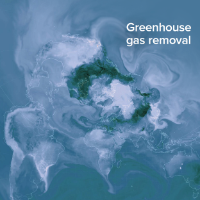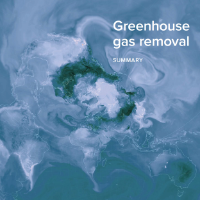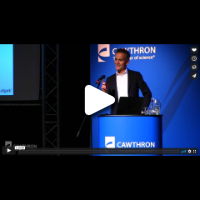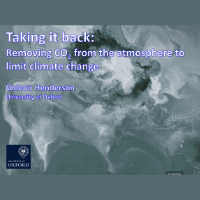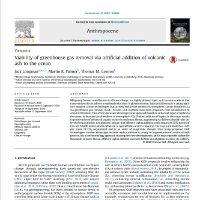Challenge 3 – Greenhouse gas removal – how to solve societal, economic and scientific barriers to implementation
More than a dozen geoengineering approaches have been suggested as a means of removing greenhouse gases from the atmosphere – which ones are most likely to solve the societal, economic and scientific barriers to implementation?
Greenhouse gas removal methods
- Forestation – Growing new trees and improving the management of existing forests. As forests grow they absorb CO2 from the atmosphere and store it in living biomass, dead organic matter and soils.
- Habitat restoration – Restoration of peatlands and coastal wetlands to increase their ability to store carbon. This also prevents carbon release through further degradation, often providing a number of other co-benefits.
- Soil carbon sequestration – Changing agricultural practices such as tillage or crop rotations to increase the soil carbon content.
- Biochar – Incorporating partially-burnt biomass into soils. Biomass is grown and burned in the absence of oxygen(pyrolysis) to create a charcoal-like product which can stabilise organic matter when added to the soil.
- Bioenergy with carbon capture and storage (BECCS) – Utilising biomass for energy, capturing the CO2 emissions and storing them to provide lifecycle GGR.
- Ocean fertilisation – Applying nutrients to the ocean to increase photosynthesis and remove atmospheric CO2.
- Building with biomass – Using forestry materials in building extends the time of carbon storage of natural biomass and enables additional forestry growth.
- Enhanced terrestrial weathering – Ground silicate rocks spread on agricultural land react with CO2 to remove it from the atmosphere.
- Mineral carbonation – Accelerating the conversion of silicate rocks to carbonates either above or below the surface to provide permanent storage for CO2.
- Ocean alkalinity – Increasing ocean concentration of ions like calcium to increase uptake of CO2 into the ocean, and reverse acidification.
- Direct air capture and carbon storage (DACCS) – Using engineered processes to capture atmospheric CO2 for subsequent geological storage.
- Low-carbon concrete – Altering the constituents, the manufacture, or the recycling method of concrete to increase its storage of CO2.
- Volcanic ash addition to the oceans – supplementing the natural process of volcanic ash deposition in ocean sediments can enhance CO2 removal from the ocean-atmosphere system.
Source: Royal Society – Greenhouse gas removal (summary)
Related resources
Teams
Over the 3-day enviroSPRINT, Teams rapidly investigated their Challenge area, identified a key problem and innovated potential solutions. The Teams demonstrated a prototype of their solution to a panel of expert judges who assessed the novelty and feasibility of the concept, along with the quality of the presentation, and selected a winner (★). Alongside this, each Team produced a 90-second summary of their idea to share with a wider audience. These can be viewed on the Team pages:
Experts
We are grateful to have the support of our expert panel:
Dr Jack Longman – University of Oldenburg
Jack is an environmental geochemist, with much of his current research focused on the impact of volcanic ash and volcanism on carbon cycling. Specifically, Jack aims to better understand processes which act to enhance carbon sequestration following volcanic eruptions, with an interest in how these processes may be applied to greenhouse gas removal. Jack completed a PhD at Northumbria University in 2017, focussed on ancient pollution reconstruction, before carrying out postdoctoral work at Southampton and Oxford universities. Since July 2020, Jack has been employed as a Scientist at the ICBM, Oldenburg.
Peter Freudenstein – Climeworks
Peter is a Climate Policy Analyst at Climeworks, a Swiss direct air capture company, where he covers carbon dioxide removal (CDR) regulatory developments in Europe and the US and works on stakeholder engagement activities. He was previously a Mercator Fellow on International Affairs and holds a dual Master’s degree with a focus on international climate and energy policy from the Fletcher School of Law and Diplomacy at Tufts University and the University of St. Gallen.
Challenge organisers
INSPIRE Doctoral Training Partnership (DTP)

The Interdisciplinary Southampton Partnership for Investigators Researching the Environment (INSPIRE) DTP will equip environmental scientists to excel in their chosen field, to thrive in interdisciplinary research teams, to apply cutting edge technology to environmental research, and to act as ambassadors of global environmental issues to industry and society. INSPIRE trains students in research, professional and transferable skills within world-leading research teams to enable them to develop as future leaders. The main scientific themes of INSPIRE are:
- Oceans and climate
- The dynamic Earth
- Interaction of organisms with the global environment
SPITFIRE Doctoral Training Partnership (DTP)

The Southampton Partnership for Innovative Training of Future Investigators Researching the Environment (SPITFIRE) is a NERC DTP creating an innovative multi-disciplinary experience for the effective training of future leaders in environmental science, engineering, technology development, business, and policy.
SPITFIRE students are registered at the University of Southampton and undertake their PhD project research within the University or one of the hosting partner organisations: National Oceanography Centre, Cefas, British Antartic Survey, UK Centre for Ecology & Hydrology, Plymouth Marine Laboratory, Natural History Museum, The Marine Biological Association, Natural Environment Research Council, HR Wallingford
SPITFIRE recruited five cohorts of up to 30 students per year but is now closed to new students. INSPIRE, the successor to SPITFIRE, is recruiting students in the years 2019 to 2023.


